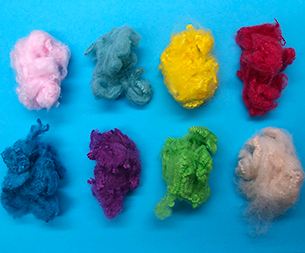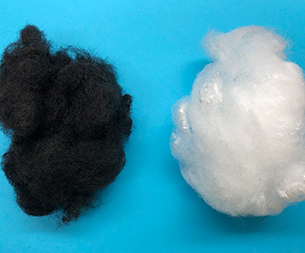In recent years, due to the frequent occurrence of fire accidents, the flame retardant property of textiles has been highly concerned, and the flame retardant finishing has become an indispensable part in the application field of textiles. With the increasingly stringent requirements of the market on environment, chemical toxicity, cost and performance, the development of environmentally friendly, non-toxic, non-polluting flame retardants has become a research hotspot at the present stage.
Classification of flame retardants for textiles
There are many ways to classify flame retardants. According to the combination of flame retardants and fabrics, they can be divided into additive flame retardants and reactive flame retardants. According to the classification of flame retardant elements, can be divided into halogen flame retardant, phosphorus flame retardant, nitrogen flame retardant.
Halogen-based flame retardants have the advantages of good flame retardancy and high flame retardancy efficiency, but a large amount of smoke and harmful gases will be generated in the combustion process, which is rarely used at present. Phosphorus - based flame retardants mainly include inorganic phosphorus - based flame retardants and organic phosphorus - based flame retardants. At present, the most used organophosphorus flame retardants in the market are mainly organophosphorus esters, which have obvious effect on flame retardant modification of polyester fabric. When the fabric is burned, it will release non-flammable gases such as ammonia, water and nitrogen when heated. These gases will dilute the concentration of flammable gases and oxygen in the air and play a role in flame retarding. As a kind of halogen-free flame retardants, organosilicon flame retardants have been widely concerned in recent years because their combustion decomposition products have no pollution to the environment. Silicone flame retardants mainly play a flame retardant role in the condensed phase, which can promote the formation of carbon layer at high temperature, or can form a dense carbon layer by itself. These carbon layers can effectively prevent the transfer of heat and the contact between oxygen and fabric, and the barrier effect is more obvious.
The greening of flame retardants is an inevitable trend. There are a variety of biomass materials in nature, such as chitosan, phytic acid, lignin, cyclodextrin, cellulose, etc., and the research on their application as flame retardants for fabrics is also increasing.
Flame retardant finishing of textiles
According to the way the flame retardant is introduced into the fabric, the manufacturing methods of flame retardant textiles can be divided into coating method, impregnation method and microcapsule method. The coating method, impregnation method used is common, the microcapsule method is flame retardant packages to microcapsules in the first, and then will fabric dipping in the flame retardant microcapsule with reactive resin solution, and then do baking with fabric, flame retardant microcapsule finally between fabric firmly deposited and make fabric flame retardant performance. For some flame retardants with small molecular weight, no reactivity or weak reactivity between the molecule and the fabric, this flame retardant finishing method can make the fabric obtain a certain durability and flame retardant performance.
- Polypropylene staple fiber take
- Textile industry scale and curre
- In what fields can polypropylene
- In the first half of 2024, the e
- Why is polypropylene staple fibe
- Downstream market mentality caut
- Orders in the textile market are
- How to increase the performance
- Demand has not been released, th
- Precautions for the use and prod
- Markets
- Automotive Products
- Nonwoven Lining
- Geosynthetics
- Liquid Filtration
- Apparel and Textiles
- Hygiene Products
- Building and Construction
- Other Markets
- Contact Us
- Contact Haibang





